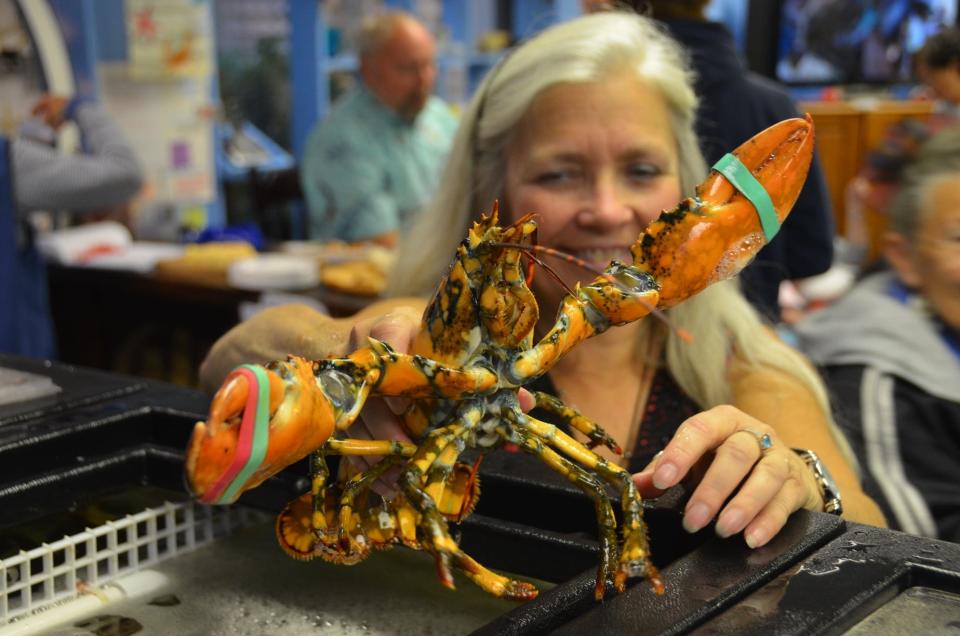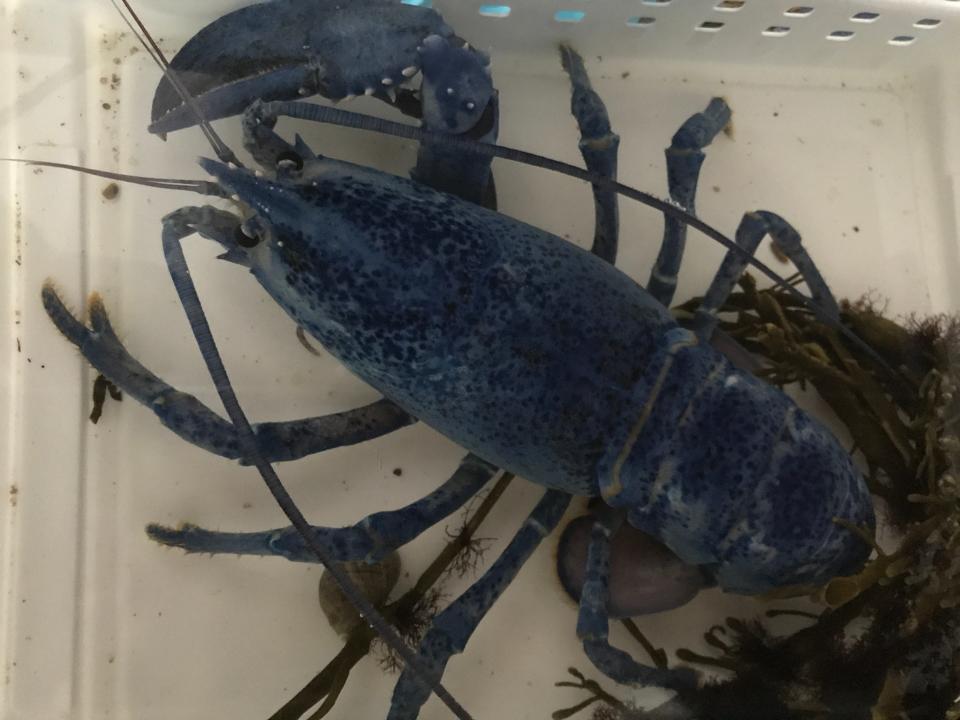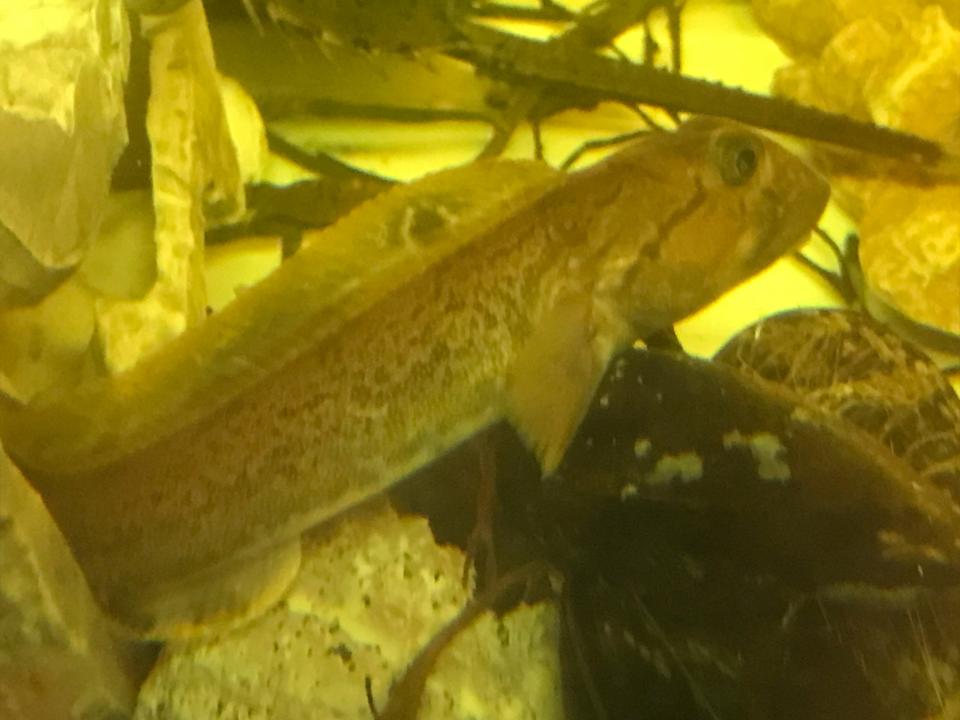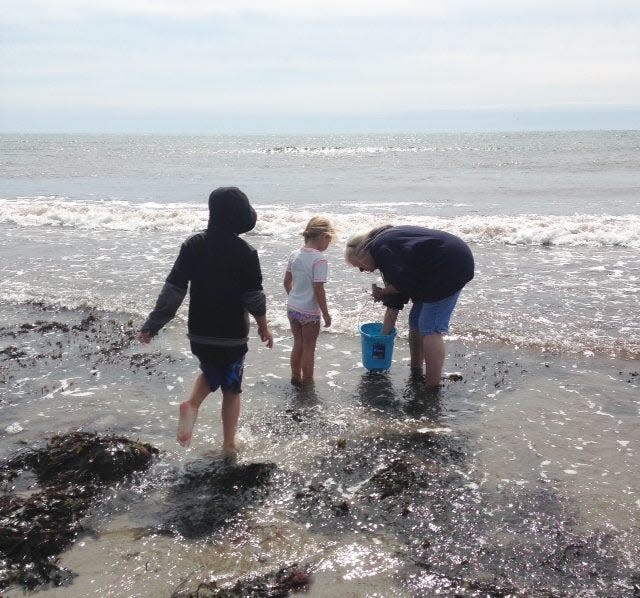Tidepooling at Hampton Beach?: You may see recently released animals from the Oceanarium
Farewell to summer, and hello to Indian summer.
I find Labor Day weekend every year to be bittersweet. While I love September, I just hate to shut down the Oceanarium and send the animals back to the sea.
This year has been especially stressful as the chiller in our large tank stopped working on Friday. We spent Labor Day using frozen seawater to chill the animals.
To top everything off, the blue lobster decided to molt on Friday evening.

Molting is always a chancy business, and I was really worried about his ability to survive with the water warming in the tank. Molting involves the lobster cracking open the hinge between its head (cephalothorax) and its tail, then wiggling out of its exoskeleton backward.
From red mud to pizza: Meet the super stars in the Gulf of Maine and beyond
They leave behind their entire outer layer, including the outside layer of their eyeballs! After exiting their skeleton, they blow themselves full of water like a water balloon and stretch out their skin. In the next few hours and days, their body gives off a hormone that hardens their skin, turning it into a new exoskeleton. This is a dangerous time for an animal, 10% of them die during the molt due to being unable to completely escape their exoskeleton or from tearing their skin and bleeding to death. Once out, they are vulnerable to attack by other animals. Amazingly, the lobster molted successfully, and his one claw, which was less than an inch, is now 2 ½ inches and working well. Unfortunately, the crusher claw, also the same size, didn’t make it through the molt.

I had to bring the critters to my tank at home in a hurry and spent Labor Day Monday night acclimating them to the colder water here. Two interns, Ryan and Tiffany, returned the tiny tidepool animals to their spot at Hampton Beach while I returned some others to Hampton Harbor.
I need to thank PJ and James Townsend, my junior biologists, who brought so many tidepool animals in for us. Over the next few weeks, as the surface water cools down, I will return the rest to their natural habitat.
What's going on? What’s behind the surge of blue, orange and calico lobsters in the Gulf of Maine?
It is always interesting to see how much the animals have grown and changed since May. The two fish that inhabited our tank don’t know how good they had it! I collected a multitude of amphipods that went through their entire life cycle in my tank, hatching out a huge number of eggs and tiny amphipods. The amphipods we collected are about an inch when mature and are crustaceans related to crabs and lobsters. They are part of the macro plankton feeding everything from larger plankton to whales.
The juvenile ocean pout and sea raven in our tank honed their hunting skills on the amphipods this summer. They entertained visitors with their “stealth” attacks to capture food. The ocean pout was about 3 inches in May and now measures over a foot! The sea raven, with a face only a mother could love, grew into an adorable 7-inch-long hunting marvel. It started out in our tank at about an inch.

What also amazed me this past weekend was the ability of the deep-water animals to acclimate to temperatures well into the 60s and then back again to their normal 41 degrees. I regularly tell visitors that most deeper water Gulf of Maine animals can only survive a 4-degree temperature change per hour. I now know that if the temperature warms very slowly over the course of several days, they can survive incredible temperature ranges.
Our spiny crab, snow crab and red crabs, along with the deep-water stars, are very active in my tank here at the house.
I have not read any accounts of them surviving in 60-degree water. I don’t think they would thrive in that temperature or even survive for long, but they can adapt for short periods of time. Something to think about when we discuss the warming of the oceans.

I hope you all get out to the beach this September and enjoy some warm water, sun, and great tide pooling. We have had some strange animal exoskeletons show up this summer on the beach, including blue crabs and lady crabs and some strange shells like ribbed slipper shells. Keep your eyes out for squid egg masses (wiggly gelatinous worm-like masses), moon snail egg masses (sand collars), and waved whelk egg masses that look like a ball of rice crispies! If you find anything that you can’t identify, feel free to email me at exploretheoceanworld@hotmail.com. I’ll try to identify it for you!
Have a great winter, we will see you again at the Oceanarium on Memorial Day weekend, May 25, 2024. See you in the spring!
Ellen Goethel is a marine biologist and the owner of Explore the Ocean World at 367 Ocean Blvd. at Hampton Beach.
This article originally appeared on Portsmouth Herald: Hampton Beach Oceanarium releases animals: Check them out tidepooling

